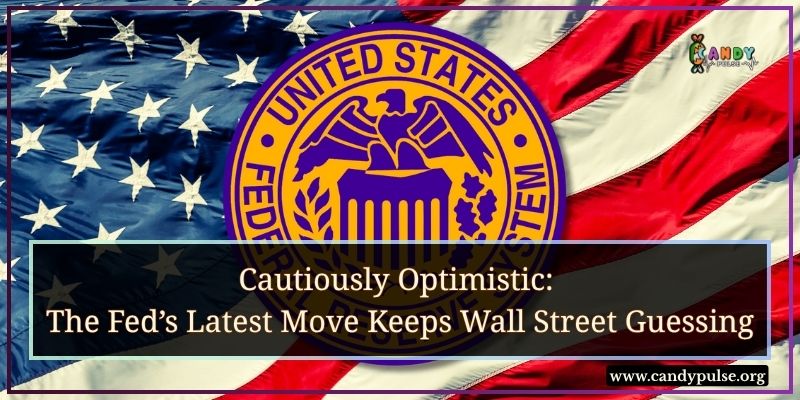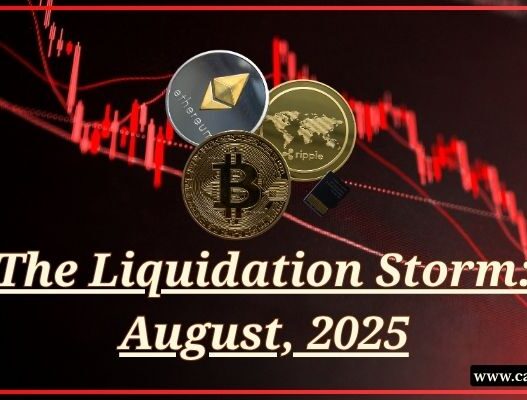Unchanged rate cuts signal the cautious stance that the Fed has been taking to keep inflation under check. Although the data suggests inflation is coming down, it is yet to achieve its target to get rate cuts. Fed Chair Jerome Powell emphasized a data-driven policy and hinted that there could be rate cuts later this year only if inflation kept hitting its lower targets.
____________________________________________________________________________
Seems like the disapproval between President Trump and Fed Chief Jerome Powell is not going to see the finale anytime soon. Since the start of his second term, President Trump made sure to keep his stand clear and kept demanding for Fed rate cuts as low as 1%, calling Mr. Powell by names not so respectful. Yet, post the much-anticipated FOMC meeting, the results came out as expected.
On July 30, 2025, the Fed declared that it will continue to keep rates unchanged at 4.25% – 4.50%. With this, it becomes the fifth time that there has been no rate adjustments. Mr. Powell’s reply is clear, the Fed will act as per data and will wait and watch while closing in towards its inflation target.
What is the FOMC and why do its meetings matter?
The FOMC, or Federal Open Market Committee, is the body of the U.S. Federal Reserve which makes decisions for setting short-term interest rates. They meet eight times a year to plan and direct the rates. Their decisions can make or break the U.S. economy, as once taken, they influence everything from home loans to credit cards. Business borrowing, investment flows, or global markets, their move affects all.
In simpler terms, suppose you take out more money than you require from your savings. You end up spending it on things and activities that you may or may not like. If this continues, you will be bankrupt one day.
Similarly, with the FOMC, if they agree on higher rates, then borrowing becomes more expensive, and people tend to spend less. This will eventually help in cooling inflation. At the same time, if the rates go down, borrowing becomes cheaper. People will be encouraged to spend more or use money unwisely. This will disrupt the economy.
So what did they say?
Fed Chair Mr. Jerome Powell clarified that there will be no change in the rates. That means the FOMC voted to keep the interest rates at 4.25% – 4.50%, same as earlier. They further stated the facts around inflation, which is too high. Even though there are some improvements, they have yet to return to the 2% target given by the Fed. They mentioned the labor market remaining strong while slowly softening in the post-pandemic era, continuing to support economic stability.
There was a visible split in opinions between two members of the committee. They advocated immediate rate cuts. It was a clear hint that internal divisions were growing within the committee. How long will it stand? Only the future can tell.
Why is the Fed being so cautious?
Did your doctor ever wait for the fever to be totally gone before taking you off the medicine? It is the same. The Fed is cautious, and why not? Inflation has cooled off a bit from its post-pandemic high, yet it has not come to the level that the Fed is aiming for. The Fed can see the risk in cutting the rates too soon. Their priority remains to fix inflation and avoid the mistake of easing policy that may build price pressures.
There are other factors at play and may bring new kinds of economic risks. They are worried about inflation, especially in the service sector. Also, recent tariff changes may affect the prices, spiking them in many cases. Then we cannot unsee the global tensions and uncertainties.
All these and many more have made the Fed lay low and move cautiously.
Will rate cuts happen this year?
There are chances of possible cuts, but not this time. They might come later in September or maybe in November. However, they too will be based on the data. Fed Chair Jerome Powell, in his post-meeting statement, mentioned clearly that the Fed is not confident enough to start cutting the rates already. He acknowledges the restrictiveness of the current policy and stated easing is an option only if inflation keeps going down.
The Fed is all prepared not to repeat its past mistakes. For now, the interest rates are steady, and the future is data-dependent. The Fed’s actions are preferring stability over speed so there could be a 100% assurance of having inflation under control. The data extracted in the next few months will decide when the rate cuts will actually begin.
FAQ
Q1: What is the FOMC and why does it matter?
A: The Federal Open Market Committee or FOMC is the policy-making arm of the U.S. Federal Reserve. Its decisions affect loan rates, business investments and global markets.
Q2: The Fed didn’t cut interest rates this time. Why?
A: Inflation is easing but still not low enough to justify rate cuts. The Fed wants more progress toward its 2% inflation target before making any changes.
Q3: What is Jerome Powell’s current stance?
A: Fed Chair Jerome Powell depends upon “data-driven approach,” meaning ‘data will be the core of every decision taken by the committee. Rate cuts will happen only if inflation cools to the target 2%.
Q4: When can we expect rate cuts?
A: There can be rate cuts later this year, but not now. As said, only data will decide the exact timings. Better the data, quicker the cuts.
Q5: How does this affect everyday people?
A: Higher interest rates means borrowing money remains an expensive deal and will keep consumer spending under the check.























